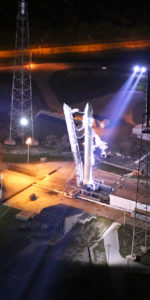
In a move which has been anticipated and discussed for at least the last several months, NASA and its International Partners have reached agreement to send a US astronaut and a Russian cosmonaut to the International Space Station for a year-long mission. Launch is anticipated “in spring 2015” and it is notable that NASA has identified one fundamental purpose of the voyage: to collect “valuable scientific data needed to send humans to new destinations in the Solar System”. Those words alone are indicative of the reality that this represents far more than an endurance stunt, but is precisely focused upon the space agency’s still-undefined plans to venture beyond Earth orbit with humans for the first time in five decades.
“In order for us to eventually move beyond low-Earth orbit, we need to better understand how humans adapt to long-term spaceflight,” said Michael Suffredini, NASA’s International Space Station Program Manager. “The space station serves as a vital scientific resource for teaching us those lessons and this year-long expedition aboard the complex will help us move closer to those journeys.” Those journeys at present remain elusive and sketchy in terms of detail, despite the Obama Administration’s determination to avoid a return to the lunar surface in favour of a piloted mission to an asteroid in the mid-2020s and a voyage to Mars orbit a decade or so thereafter. Certainly, NASA’s Aquarius undersea exploration facility has been used in recent months for asteroid mission practice, but other voices from within the agency seem to hint at growing favour for an Exploration Gateway, based at one of the Earth-Moon gravitational ‘Lagrange Points’.

Although such long flights are nothing new – more than two dozen spacefarers, including three Americans, have spent more than 365 days aloft, cumulatively, across several missions – they have not been attempted since the era of Mir in the 1980s and 1990s. The first year-long voyage was that of Vladimir Titov and Musa Manarov to the Mir space station in December 1987-December 1988 and the current single-mission record is that of Valeri Polyakov, who spent 437 days in orbit between January 1994 and March 1995. One of the Americans who has amassed more than a year aloft is Peggy Whitson, who flew two six-month missions to the International Space Station and who was until recently the chief of NASA’s astronaut corps. Speculation has been rife that one of the reasons for her decision to step down and return to active flight status was an intention to participate in what promises to be the longest single American human space mission ever undertaken.
Today’s acknowledgement from NASA that the year-long flight will begin in 2015, and will include one US and one Russian crew member, acquiesces that the names of those crew members will be announced at a later date. However, it seems hardly likely that the space agency will select a rookie member of its corps to participate in such a pivotal mission. At present, the names of only one Soyuz crew for 2015 – scheduled to launch in March – have unofficially entered the public domain: Cosmonauts Yuri Lonchakov and Alexei Ovchinin, together with rookie NASA astronaut Kjell Lindgren, are presently training for Expedition 43/44. The next crew, due to follow in May 2015, will include Japanese Aerospace Exploration Agency (JAXA) astronaut Kimiya Yui, who was named earlier today as the fifth Japanese expedition crew member, following his countrymen Koichi Wakata, Soichi Noguchi, Satoshi Furukawa and (currently in orbit) Aki Hoshide.

NASA’s announcement certainly suggests that at least one of the year-long crew members will accompany Yui into space aboard the Soyuz spacecraft in a little less than three years’ time. In the words of JAXA President Keiji Tachikawa, speaking about Yui’s forthcoming mission: “I hope this long-duration stay…will further encourage younger generations who will bear the future and generate useful results to society.” Yui’s flight, and that of the year-long mission, promises to do just that. For more than a decade, the International Space Station has enabled over a dozen nations – some of them on the brink of war just a handful of decades ago – to work collaboratively on the most complex engineering accomplishment in human history. Six-month missions are now relatively commonplace. As current circumstances stand, Kimiya Yui will likely be in orbit when the station takes its next steps toward enabling the exploration of the future.
Missions » ISS »





One Comment
One Ping
Pingback:United States and North American News | David Reneke | Space and Astronomy News